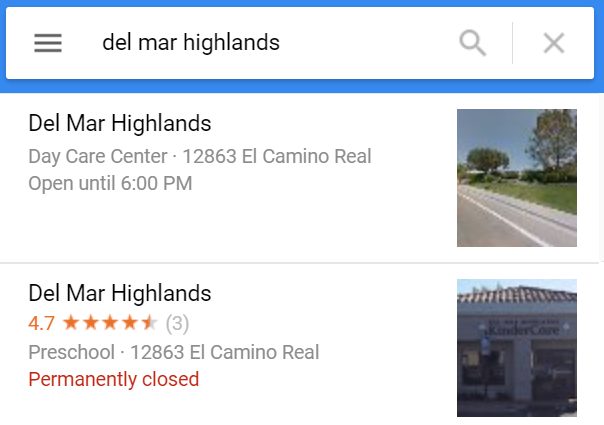How to Manage Duplicate Listings In Google My Business

The ‘ye old duplicate dilemma…What is a duplicate listing? How are duplicate listings hurting you? How do we identify a duplicate listing? And what the heck do we do with them? These are all great questions, questions we hope we can help you answer as you navigate the sea of dupes!
What is a duplicate listing?

For simplicity’s sake, let’s focus on two kinds of duplicates. The first is what we like to call a “Rogue Duplicate.” A rogue duplicate (above) exists outside of your Google My Business (GMB) account and mimics or is identical to a Google listing you already manage within your own GMB account. Oftentimes with these rogue listings, we don’t know when they set sail or who the captain is, but we know they are stirring up our waters and possibly pointing our customers in the wrong direction.

The second kind of duplicate we will talk about is an internal duplicate (above). These are locations which Google has deemed too similar to a location already located in your GMB account. In this instance, Google will flag the location status of the location as “Duplicate” and prevent it from publishing. This is a safeguard Google has in place to help mitigate the creation of duplicate locations. However, Google’s safeguard is not fail-proof, and we are left to fend for ourselves.
How are duplicate listings hurting you?
Now that we know how to classify duplicates, the next question is how are they hurting you? Well, to be frank, in lots of ways. From a user experience perspective, having duplicate listings can lead to customer confusion. Often caused from outdated and inconsistent information, duplicate listings can leave the searcher wondering which telephone number to choose from or which address to request directions to. As you can imagine, this is not only hurting your chances of successful contact, it’s also hurting your local listing ranking.
Google uses what we like to refer to as “spiders.” These spiders crawl the web, finding your location data on various sources and associating them back to one another. The less consistent these mentions of your brand’s name, address and phone number, the more the search engines can devalue the trust for your specific listing.
How do we identify a duplicate listing?
Depending on the number of business locations, a simple Google search can be very helpful in identifying inconsistent data. Start by searching for your business name + city, state. This is a quick way to identify any glaring inconsistencies, and we recommend resolving these first and foremost. From there, our friends over at Moz have a great tool which can help you identify variations of your business information across sources outside of Google.
So, what the heck do we do with them?
This is the tricky part. As there are thousands of directories across the web, each inconsistent mention of your business will likely require a slightly different process for removal. Our recommendation… start with Google! With 90%+ of your business traffic likely coming from Google, cleaning this up first will make the largest impact. Begin compiling a list of the URLs and inconsistent information you record during your research phase.
Next, look to see if there is a “claim this listing” hyperlink anywhere on the duplicate listing you have identified. If it lives outside of Google, there’s a good chance said website will ask you to pay your hard-earned dollars to update that information. However, if you spend a little time and can locate a contact email address, an email explaining the inconsistency and asking for removal can go a long way. For Google, your best bet is always to contact to support.
To get in contact with Google support, Location3 recommends reaching out via their support line, which can be found here. We have also had success reaching out via the GMB twitter account (yes, it really works!).
As the late, great Jimmy Dean once said, “I can’t change the direction of the wind, but I can adjust my sails to always reach my destination.” Duplicates happen, and while we can’t prevent them, we can help minimize their negative impact with a little hard work and elbow grease!
Stay In Touch.
Subscribe to our monthly email newsletter.
